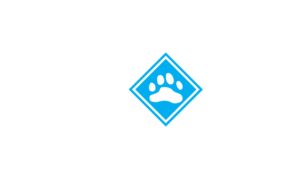
The route used by the southern-most sections of the Catamount Trail was designed to be as flat as practicable. So flat that miles of it were blasted out of ledge to maintain the even grade. So flat that it has a long rock cut to avoid climbing a ridge, and a 200 foot high earthen fill to cross a river. So flat that we use bicycles to do trail maintenance. So flat that I’ve ridden a train on it. Of course, all that construction wasn’t done with skiing in mind. In 1891, the mill and timber owners of the valley built the Hoosac Tunnel & Wilmington Railroad. Known as the Hoot, Toot & Whistle, this line connected Wilmington with the railroad to the south at Hoosac Tunnel, Mass. In 1923 a hydro-power project to dam the Deerfield River required the railroad to be relocated to get it above what would soon be Harriman Reservoir. In 1937 most of the railroad was abandoned after extensive flood damage and in 1970 the remainder of the railroad was scrapped.

This left a perfect route for cross-country skiing, if you like your trails flat! With few exceptions Sections 1 and 2 follow the old railroad bed. It stretches from the State Line to Route 9, along the Deerfield River on the property of TransCanada, which owns many hydro-power projects in the valley. Today, skiers can start at Harriman Station (not to be confused with Harriman Dam), just south of Readsboro. From here you have to ski south to the state line, alongside Sherman Reservoir, and through the abandoned village of Sherman. Look on the hillside above you for the ruins of an old mill. Celebrate the State Line, then ski back to Harriman Station. If you want a short flat ski trip for kids, this is it. Harriman Station houses the turbines and generators for making hydro-power from Harriman Reservoir. It connects to Harriman Dam via a 20 foot diameter 2.5 mile long tunnel through the mountains. Skiers take a longer, drier and more scenic route, crossing a road several times until reaching the road walk at Readsboro.
The next three miles are my favorite part of the trip. We start out next to the river, slowly climbing out of the steep narrow valley. A missing trestle and some washed out culverts break up the otherwise easy skiing. Look for Blanchard Cemetery, and signs of moose, bear and porcupine in this section. Notice how difficult it would be to put a ski trail though this remote and rock-strewn valley, if the railroad hadn’t blasted a ledge for us. Toward the end you can see the face of Harriman Dam, a large earthen dam that creates Harriman Reservoir. The remainder of the section is the part that is most often skied, as it provides a continuous eight miles of easy skiing. Crossing 200 feet above the river on what was once the world’s largest earth-fill dam, the railroad bed and trail turns north and follows the reservoir, gradually edging away to cross Wilder Brook. Where the trail gets narrow and uneven in two places look for old abutments, as the route leaves the roadbed to bypass washed-out bridges. After passing through a ridge in a deep rock cut, we join a quiet snowmobile trail for a long gradual descent back to reservoir level, while a side trail to the reservoir and some inviting woods skiing call out to those who need more challenging skiing. Near the end, at the Mountain Mills Picnic Area, look for remains of Mountain Mills, once a village with a population of about 200, which was the logging capital of southern Vermont, making pulp and sawing 7 million board feet of lumber per year for 30 years, from 123,000 acres of timberland. Ski up the access road to the end of plowing. From here the trail on-and-off follows the old three-foot gauge logging railroad bed along the Deerfield River.
So did I really ride a train on the CT? No, but I did ride from Hoosac Tunnel to Readsboro on the same route, back in 1969, when the railroad was still running. Next time you ski this section and see no one all day, think about 100 passengers a day in rickety wooden passenger cars, pulled by a steam engine, traveling over the same route 110 years ago. You can read more about the fascinating railroad, social and industrial history of this area in Brian Donelson’s “The Coming of the Train”.










